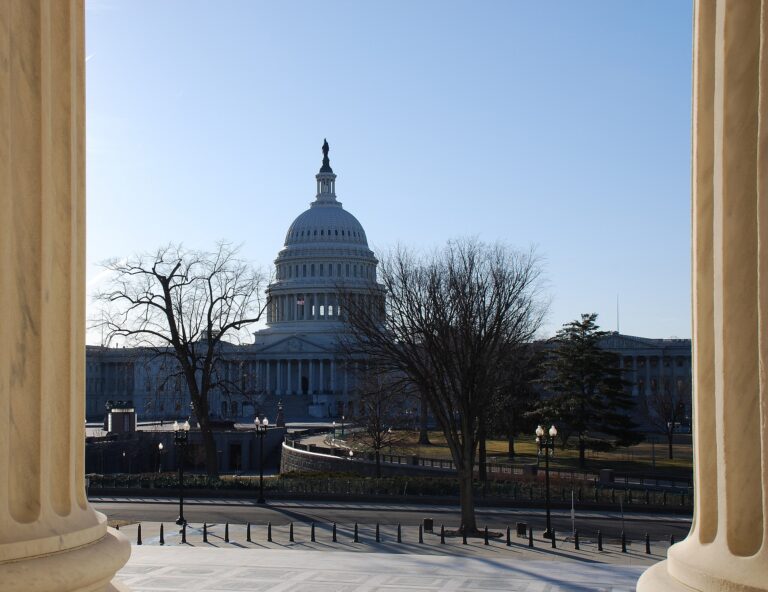
The Muslim Family Law Reform: Exploring Cross-National and Historical Differences
Yüksel Sezgin
Illustration commissioned for this project by Tahira Rifath
Fifty-three nations (35 Muslim-majority, 18 Muslim-minority) formally integrate shari‘a-based Muslim Family Laws (MFLs) into their domestic legal systems and enforce them through state-run (religious or civil) courts adjudicating familial disputes among their Muslim citizens.
State-enforced MFLs often violate people’s fundamental rights and liberties. For example, in many jurisdictions, a husband can divorce his wife unilaterally and extra-judicially by uttering the word talaq three times. A man can have up to four wives and even marry a female child as young as nine (albeit very rarely). In inheritance, females receive half the share of their male siblings. If one of the spouses converts out of Islam, their marriage may be dissolved as the so-called “apostate” may be barred from remarrying, bequeathing, inheriting, or holding custody of their children.
I am currently writing a book that investigates how Muslim-minority countries administer MFLs, specifically looking at the cases of Israel, India, Greece, and Ghana. This project is based on empirical data I have collected through multiple field trips. During one of my visits, I met with state-appointed muftis in Thrace (Greece) who referred to the version of Islamic law they applied in religious tribunals as “light shari‘a,”—implying that their version of “shari‘a” was less restrictive of human or women’s rights than “shari‘a” in the Middle East. A few years earlier, an Israeli family court judge, who was Jewish, told me that he interpreted Islamic law more “liberally” than Muslim qadis and adjusted it to “modern” times. Informants in other non-Muslim jurisdictions also have made similar remarks. They all insinuated that MFLs in Muslim-minority countries were more “reformed” or less “discriminatory” than those in Muslim-majority countries. Since then, I wondered if there was any truth to these claims. Did Muslim-minority governments apply a more “reformed” version of MFL than Muslim-majority countries? If so, what could explain it?
There are vast geographical, historical, sectarian, cultural, and political differences across MFL-applying nations. This gives rise to considerable cross-national and historical variation regarding how MFLs affect human and women’s rights. But, until recently, there has been no way of quantitatively capturing this fascinating spatiotemporal diversity as we lacked tools to measure the degree of reform or human or women’s rights-friendliness of national MFL systems to compare them. Therefore, we could not answer any of the questions above.
This debilitating shortcoming has been remedied thanks to the Muslim Family Law Index (MFL-I). This novel methodological tool measures the extent to which MFLs are reformed and rendered compliant with the specific rule of law and human/women’s rights standards. The MFL-I and its sub-indices enable researchers to conduct cross-national and historical analyses of MFL systems and explore different modes and means of reform. In this short essay, I will share intriguing findings from an exploratory study that utilizes this new methodological tool to compare historical trends, means, and types of MFL reform in Muslim-majority vs. Muslim-minority countries.
The Muslim Family Law Index
The MFL-I and its sub-indices cover 43 countries. They assign each country an annual score (between 0 and 100), starting with the year it gained independence through 2016. The higher the score, the more reformed or compliant the national MFL system is with human/women’s rights and the rule of law.
The MFL-I assigns a cumulative reform score, combining three separate sub-index scores into one. Individual scores from sub-indices provide insight into countries’ choices of reform over time, making it possible to compare national MFL systems in greater detail.
The Substantive Reform Index (SR-I) measures the extent to which MFL rules concerning polygyny, talaq, and underage marriage have been reformed. The Procedural Reform Index (PR-I) measures the degree to which specific rule of law and due process rights are integrated into the MFL systems. Finally, the Exit Rights Index (ER-I) measures the degree to which the MFL systems in question operate voluntarily, allowing individuals to exit religious jurisdiction and opt for civil laws that uniformly apply to all citizens regardless of religion.
A quick comparison of Muslim-majority and -minority nations’ mean cumulative reform (i.e., MFL-I) scores (29 vs. 41) in Table 1 suggests that MFLs in the latter group of countries are considerably more reformed or human/women’s rights and rule-law friendlier than those in the former. In other words, non-Muslim countries appear to apply a more liberal or enlightened version of Islamic law, as some of my informants insinuated.
| Muslim Family Law Index(MFL-I) | Substantive Reform Index (SR-I) | Procedural Reform Index (PR-I) | Exit Rights Index (ER-I) | ||||
| Muslim-Majority | Muslim-Minority | Muslim-Majority | Muslim-Minority | Muslim-Majority | Muslim-Minority | Muslim-Majority | Muslim-Minority |
| 29 | 41 | 17 | 13 | 47 | 48 | 11 | 45 |
However, a more nuanced picture emerges when we compare sub-index scores. For example, Muslim-majority countries have a higher average SR-I score than Muslim-minority countries (17 vs. 13). In comparison, the latter achieves a considerably higher average ER-I score than the former (45 vs. 11). The table also shows that despite the statistically significant differences in their average SR-I and ER-I scores, Muslim-majority and -minority countries have nearly identical PR-I scores (the difference is not statistically significant).
Put another way, even though Muslim-minority countries appear to have more “reformed” MFL systems than their Muslim counterparts on the surface, a closer analysis reveals that each group has prioritized different types of reform. Muslim-majority states have put greater emphasis on substantive reform by amending rules concerning polygyny, underage marriage, and talaq. In contrast, Muslim-minority governments have mostly avoided substantive interventions into “shari‘a”-based family laws. Instead, they have primarily focused their efforts on exit reforms, which allowed non-consenting individuals to leave religious jurisdiction, marry civilly, and bring their marital disputes to secular courts.
How can we make sense of these divergent preferences and types of reform between the two sets of countries? What are the political, historical, cultural, and institutional correlates of reform that may prove helpful in understanding these differences?
The Correlates of Muslim Family Law Reform
Colonial Legacy, Democracy, and Secularism
The correlation analysis, conducted to explore the factors associated with the observed differences in type and degree of MFL reform across Muslim-majority and -minority countries, reveals some exciting findings.
Most countries inherited their MFL systems directly from colonial rule, mainly the British and the French. Against this backdrop, the statistical analysis found that British colonialism was negatively associated with substantive reforms and exit rights in both Muslim-majority and -minority nations, while French colonialism was positively correlated. Put another way, findings suggest that practices such as polygyny, talaq, and underage marriage were more prevalent in former British colonies than in former French colonies. This is a particularly puzzling finding, especially considering that countries with British colonial heritage were, on average, more democratic than those with a French legacy. Then, how come former British colonies applied more regressive versions of Muslim law despite their greater democratic tendencies?
Right at this point, the statistical analysis makes another startling observation. It shows that democracy has a complicated relationship with MFL reform. In Muslim-majority countries, it has a positive and significant association with substantive reform and exit rights. In the non-Muslim world, however, the relationship is inverse. Perhaps, in Muslim-minority countries, democratically elected governments find it more difficult than their Muslim counterparts to reform the MFLs. The former lacks the political and religious legitimacy to intervene in the “sacred” laws of their Muslim minorities–hence, the relationship between democracy and reform probably takes an inverse form.
The study also makes a stunning discovery concerning state-religion relations. Data shows that there is a positive correlation between secularism and MFL reform. On average, former French colonies are more secular than former British colonies. Perhaps this partly explains why the latter group of countries’ cumulative reform scores (MFL-I) are usually lower than those in the former category. However, further in-depth analyses propose that how secularism relates to substantive reform vs. exit rights varies significantly between Muslim-majority and -minority nations.
In Muslim-majority countries, secularism matters more for exit rights than substantive reform. As noted above, exit rights allow individual Muslims to choose between civil and religion-based family laws. The data would suggest that the secular threshold (and possibly the transaction cost) for offering exit rights (instead of substantive reform) is much higher for Muslim-majority regimes. Put another way, providing exit rights in a Muslim-majority country probably requires a higher level of ideological (i.e., secular) commitment on the part of the government.
In contrast, in Muslim-minority settings, substantive reform requires a greater degree of ideological commitment and political capital than exit rights. Many Muslim-minority countries already have civil family laws in force. It is probably easier for them to bring their Muslim citizens under the purview of those laws by offering exit rights rather than reforming religious laws of the minority through direct interventions.
Women’s Political Participation and Activism
The statistical analysis shows that women’s political participation and the presence of powerful feminist movements also positively correlate with substantive reforms and exit rights in both Muslim-majority and -minority countries. It is not surprising that we find a positive correlation between women’s political empowerment and the feminist movement on the one hand and MFL reform on the other, especially in Muslim-majority countries. However, the positive relationship observed in Muslim-minority countries demands further explanation.
Data about female representation and the strength of feminist groups in Muslim-minority countries are primarily about the women of the majority communities (i.e., non-Muslim women). Otherwise, we have no systematic information about the number of Muslim women parliamentarians or the strength of Muslim women’s organizations in Muslim-minority countries. Therefore, the relationship that we observe between these two variables and the substantive MFL reform in Muslim-minority settings suggests that non-Muslim women’s political representation and their organizational strength may help improve the status of Muslim women who live in those countries. This may be surprising, but it is not a counterintuitive finding. During my field trips, especially in India and Israel, I repeatedly observed that Muslim women’s organizations had often formed alliances with non-Muslim women—whose rights were also undermined by their communal laws—and worked together to reform their respective family laws. In other words, the majority women’s political empowerment and social activism may be harnessed to improve the MFLs in Muslim-minority countries.
Political Tolerance and Ethno-Religious Diversity
The study also found that nations more tolerant of ethnic and religious diversity had experienced greater levels of MFL reform. For instance, Muslim-minority regimes where Muslims encountered less social and political discrimination granted greater levels of exit rights. Similarly, Sub-Saharan Africa, a region containing some of the world’s most religiously and ethnically diverse societies, exhibits the highest ER-I scores, especially compared to the MENA region.
Findings from Muslim-majority countries are somewhat similar, with a caveat: that religious diversity is negatively associated with substantive reform despite its positive correlation with exit rights. This probably has to do with how Muslim states historically accommodated religious diversity. For instance, the Ottomans recognized religious communities as distinct “millets” and allowed them to administer religious family laws at communal courts. Scholars have long considered millet-like systems detrimental to human/women’s rights. Perhaps this is why we observe an inverse relationship between religious diversity and substantive reforms, which were often carried out to improve women’s status in Muslim-majority societies.
Conclusion
This short essay introduced a novel methodological tool that scholars, policymakers, and activists could employ to explore cross-national and historical variations across national MFL systems. Further, it extensively discussed the results of a recent exploratory study examining the variations between MFL reforms in Muslim-majority vs. minority nations to highlight the MFL-I and its sub-indices’ full potential.
Over the last seven decades, MFLs have become more reformed or compliant with human rights and the rule of law worldwide. Yet, MFL reform has taken distinct forms in Muslim-majority countries as opposed to Muslim-minority countries. Muslim-majority nations have prioritized substantive reforms, whereas Muslim-minority nations have focused on exit reforms.
British colonial heritage was negatively associated with all forms of MFL reform in both groups of countries. In contrast, the French colonial experience positively correlated with substantive reform and exit rights. Women’s political participation, the strength of feminist movements, and secularism were also positively associated with the MFL reform in both types of countries. The majority women’s political activism was also correlated with MFL reform in Muslim-minority countries.
Muslim-minority regimes preferred exit rights, as they probably carried lower political costs than substantive reforms. Exit rights were also prevalent in diverse and politically tolerant societies. This was true in Muslim-majority and -minority countries–yet the latter was visibly more diverse and tolerant than the former, granting more exit rights. In Muslim-majority societies, religious diversity was inversely correlated with substantive rights. Perhaps this was a recalcitrant legacy of the old millet system. Lastly, in Muslim-majority countries, exit rights were much rarer than other types of reform. Probably, such reforms were not politically expedient in a Muslim-majority context.
The associations discussed above are only preliminary findings. They aim to provide readers with global and historical insights and provoke them to think deeply about international, historical, and socio-political determinants and mechanics of MFL reform at higher abstraction levels. Readers interested in learning more about the MFL-I and its sub-indices should visit the project website at www.muslimfamilylawindex.org. ♦

Yüksel Sezgin is a professor of political science at Syracuse University and the author of Human Rights under State-Enforced Religious Family Laws in Israel, Egypt and India (Cambridge University Press, 2013).
Recommended Citation
Sezgin, Yüksel. “The Muslim Family Law Reform: Exploring Cross-National and Historical Differences.” Canopy Forum, October 9, 2024. https://canopyforum.org/2024/10/09/the-muslim-family-law-reform-exploring-cross-national-and-historical-differences/.
Recent Posts










